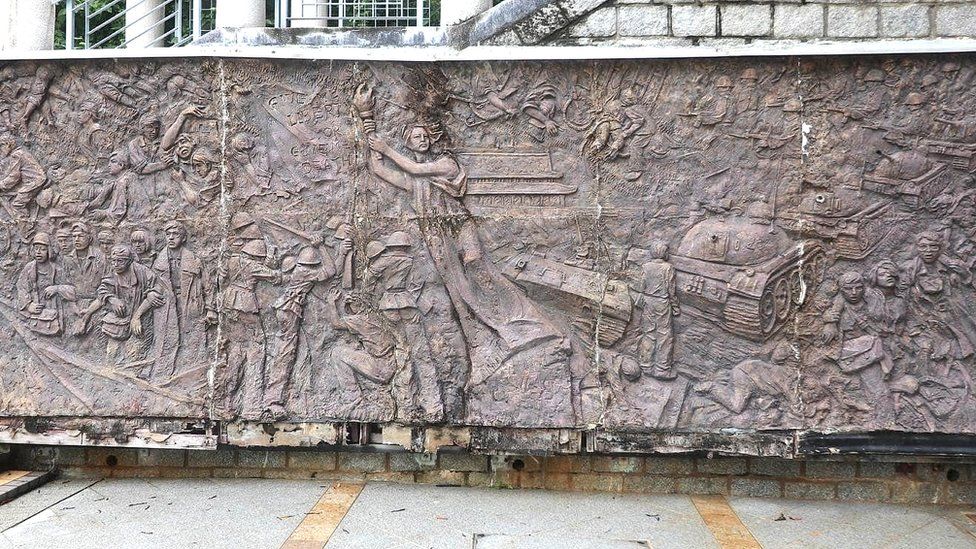As the Chinese economy gets set to overtake that of the USA, the regime led by Xi Jinping aims to assert its authority. Under Xi’s predecessor, Deng Xiaoping, the Chinese state bureaucracy opened up the country to both globalisation and the market. However, this was not a sudden change, but one firmly regulated by the regime, which was determined to remain in full control.
The Chinese bureaucracy allowed Western corporations to come into China to produce goods for the global market at low costs. This climaxed in China becoming the world’s greatest industrial economy and largest exporter, moving well away from being a predominantly peasant economy.
The Western powers hoped this would weaken the regime in China. However, under Deng’s successor, Xi Jinping, the leadership of the Communist Party of China has retained its hold over the economy. It continues to control a large number of industries owned by the State, and to exert its influence over so called private enterprises, owned by entrepreneurs very much within the orbit of the Party apparatus. These capitalists are some of the richest in the world, outdoing those Russian tycoons enriched by the liberalisation of the Russian economy.
This rise to the top of the heap has worried large elements of the ruling class in the United States, concerned that the USA would lose its position as the world’s greatest power. This explains both the rhetoric of Trump and now of Biden. However, other elements of the US ruling class are still eager to invest in the Chinese economy and all the big banking houses and financial institutions are keen to exploit the new market in China for savings investments.
However, the massive industrialisation of China comes at a cost for the Chinese ruling bureaucracy. The vastly increased working class has engaged in waves of strikes, and amongst the peasantry too, there have been a series of struggles around land issues. Of course, at the beginning of the process of opening up the economy to market forces came the events of Tiananmen Square in 1989. Up to a million people mobilised around issues of corruption, freedom of the press and freedom of speech, concerns over the widening gap between the newly rich and the many who remained in poverty, as well as other issues. The Party bureaucracy retaliated by bringing in armed forces and crushing the protest, resulting in a large number of deaths estimated at between several hundreds and several thousands. The Tiananmen events convinced the Communist Party leadership that it must retain strict control over the economy and over the political and cultural life of China.
New factors came with Hong Kong becoming a Special Administrative Region of China in 1997. The mass unrest there over the increasing pressure from the Beijing authorities and their influence over the local administration has deeply worried the Communist Party bureaucracy, affrighted that the unrest could spread to the rest of China.
Other factors have come into play as well. Chief among these is the phenomenon of tang ping. This can be translated as ‘lying flat’ and has spread among Chinese youth, both among young workers and students. Sickened by an economy which demands a working week of six full days from 9am to 9pm, many have determined to do as little as possible at work. This has resulted in the Communist Party initiating a number of measures aimed at clamping down on what it sees as Westernising influences and ranges from karaoke to computer games. The large number of students who have been allowed to study at universities in the West undoubtedly must also be having an influence in importing what are seen as dangerous ideas.
Alongside the clamping down within the ‘People’s Republic’ has been the drive against dissent in Hong Kong. The latest example of this has been the decision by the University of Hong Kong to cut up and remove the Pillar of Shame monument commemorating the dead of Tiananmen Square. Erected in 1997, the statue was abruptly demolished on Wednesday December 22nd. The Goddess of Democracy statue, a replica of the original one in Tiananmen Square, at the Chinese University of Hong Kong was removed soon after, as was the Tiananmen Relief Sculpture at Lingnan University. This follows on from the stripping of posters from ‘democracy walls’ on the campus. Alongside this has been a general campaign of repression against dissidents, who have been imprisoned or driven into exile.

The dismantling of these monuments is highly symbolic. It indicates the determination of the Chinese Communist Party to maintain its control. In September Hong Kong’s main group mobilising in memory of the victims of Tiananmen Square was forced to disband. The previous year, the Hong Kong authorities had banned the annual candlelight vigils commemorating Tiananmen Square.
Whether the Communist Party can maintain its control, not just in Hong Kong but throughout the so-called People’s Republic remains to be seen. It is possible that titanic struggles could shake the Chinese State over the coming years. Meanwhile in order to facilitate its marketisation of the Chinese economy and its clampdown, the Chinese Communist Party has increasingly resorted to nationalistic appeals, which includes shows of strength against Taiwan. Alongside this has been the Chinese State’s horrendous treatment of the Uighurs in Xinjiang.


